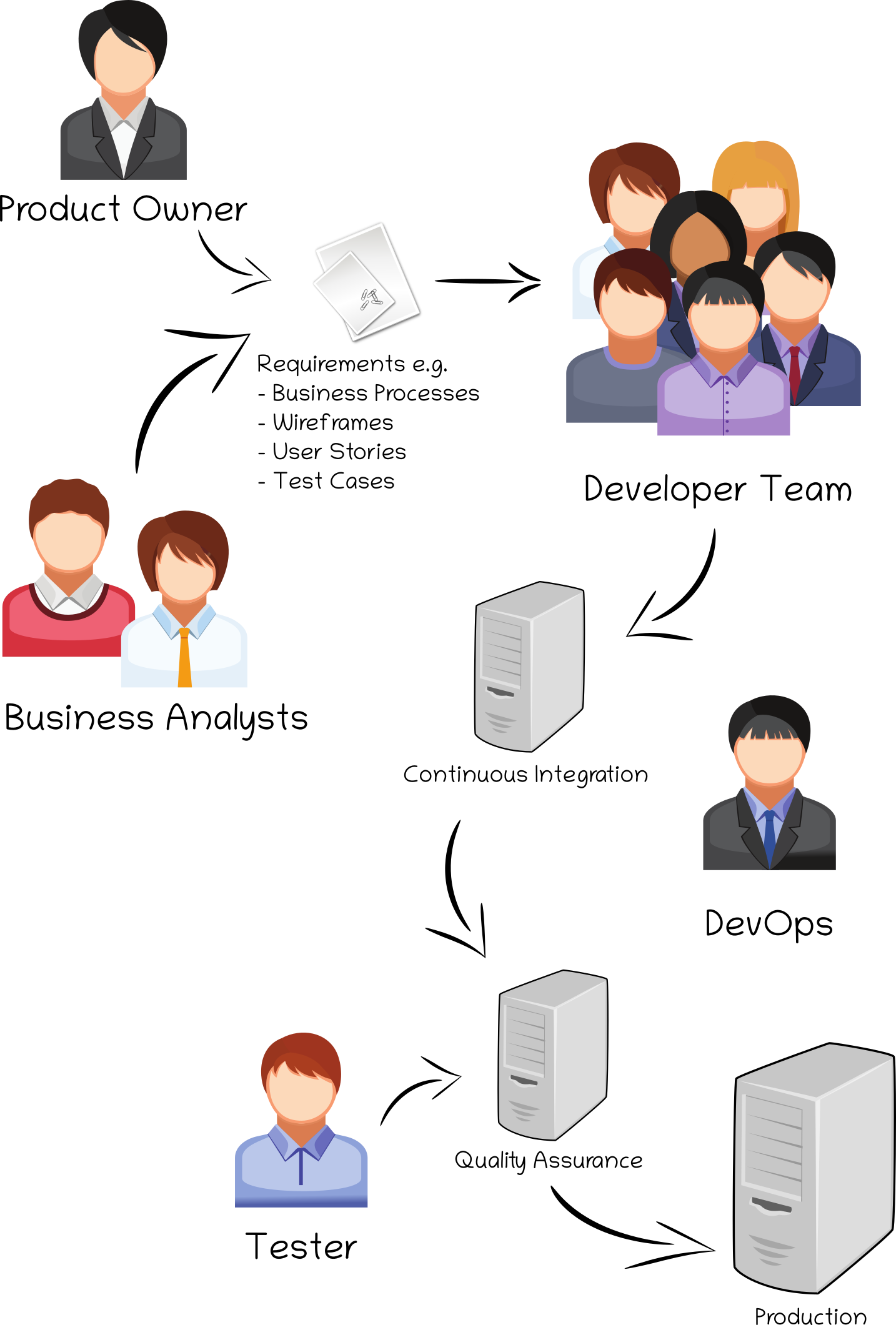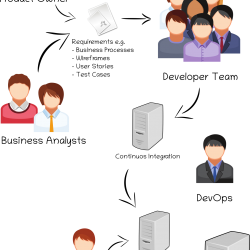This is the fourth part of the series microservices and business value. It will handle the most important part of your IT projects. The team structure.

Team size
The whole size of a team responsible for one business application like time tracking or invoicing should not exceed 12 people. Up to 8 people are the development team. It is also common that 12 people form sub groups. This group size is backed by current research. To motivate them you should give them these three things:
- Autonomy
- Mastery
- Purpose
Time frame
Most of the people are not able to plan for a long time and a lot of challenges are overlooked when you are not doing single batch production. So you should deliver in a constant time frame to your customers. I would recommend the following time frames for sprints and deployments:
- Sprint duraction 2 weeks
- Deployments biweekly
The sprint should be disconnected from the deployments.
Product owner
The product owner is the “single wringable neck” because they are responsible for the domain of the product. They have to be domain experts and should be able to train their developers about the domain.
Business analysts
Business analysts help the product owner to gather requirements. Typical tools that they use are:
- Wireframes
- Business processes
- Test Cases
- User stories
- Design Thinking
Development team
The development team is the main value driver for the product because they create the product. A mature development team will work as a single unit. This means that people will take responsible for all the tasks and help each other. Further they will try to find consensus on difficult decisions.
Agile vs Waterfall
You should use an agile methodology if you have a moving target and don’t know yet what your goal is. The current trend is to use methodologies like Scrum or Kanban but like all the time there are advantages and disadvantages. Here is a small table that compares Scrum vs Waterfall.
| Waterfall | Agile | |
|---|---|---|
| Advantages |
|
|
| Disadvantages |
|
|
Conclusion
A good teamm structure with autonomy will motivate people and make them innovative. They will regulate themself and drive for mastery. If you need help create award winning teams feel free to contact us.

Leave a Reply